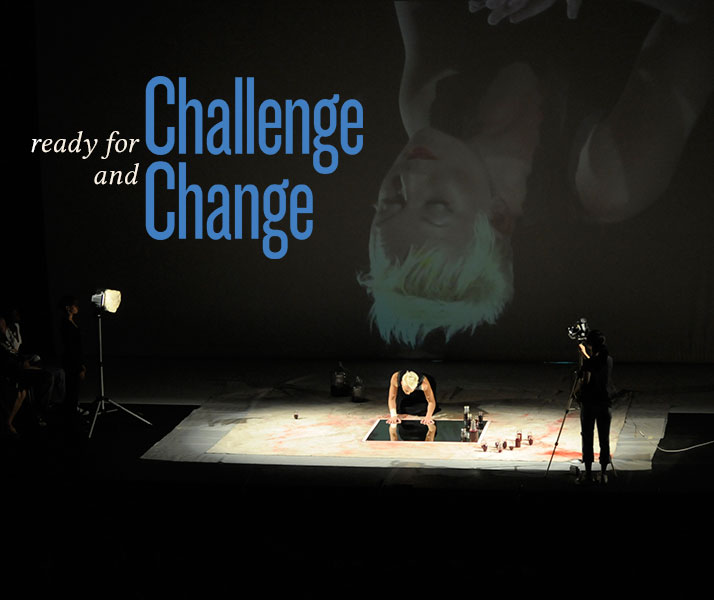
Ready for challenge and change
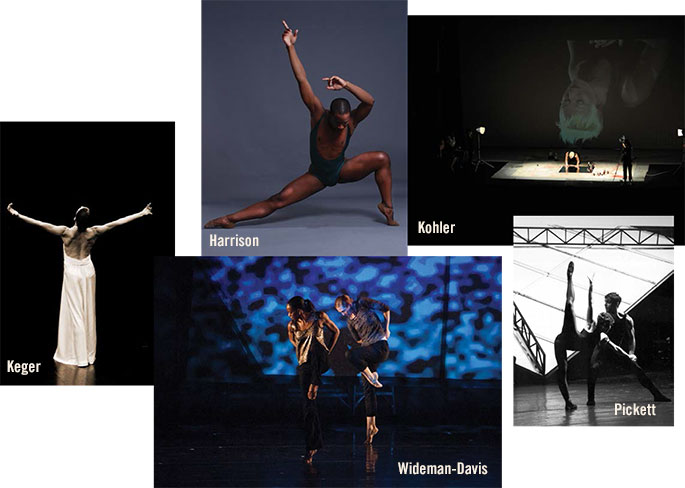
Recent graduates of Hollins’ M.F.A. program in dance discuss how the experience changed their lives and enabled them to evolve as artists.
By Jeff Hodges M.A.L.S. ’11
From young, emerging artists to established performers and choreographers, and from educators in traditional programs to artists who choose to work outside of the mainstream, dance professionals from an extraordinary array of backgrounds and interests are growing in their craft through Hollins’ master of fine arts program in dance. What follows are highlights from the careers of five recent M.F.A. graduates.
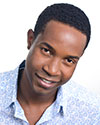
Iyun Harrison M.F.A. ’10, artistic director of the Seattle-based dance company Ashani Dances and an assistant professor of dance at Cornish College of the Arts. He has danced professionally with Dance Theatre of Harlem, Ballet Hispanico of New York, the National Dance Theatre Company of Jamaica, and Ailey II. A graduate of the Julliard School, Harrison has performed on NBC and PBS and as a guest artist with St. Louis Black Repertory Theater.
[hr]
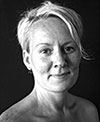 Gina Kohler M.F.A. ’10, an independent choreographer who presents her work in New York City and abroad and is co-director for the Brooklyn Arts Exchange Youth Dance Company. Her project dream [factories] has been performed in the U.S. and Austria and is in development as both a live art event and a book.
Gina Kohler M.F.A. ’10, an independent choreographer who presents her work in New York City and abroad and is co-director for the Brooklyn Arts Exchange Youth Dance Company. Her project dream [factories] has been performed in the U.S. and Austria and is in development as both a live art event and a book.
[hr]
 Susan Koper M.F.A. ’13, who has danced professionally with Buffalo’s Empire State Ballet and currently teaches ballet and modern technique in the department of theatre and dance at Ball State University. She has worked with the dance theatre collaborative z3movement project, performing in festivals in New York and Chicago.
Susan Koper M.F.A. ’13, who has danced professionally with Buffalo’s Empire State Ballet and currently teaches ballet and modern technique in the department of theatre and dance at Ball State University. She has worked with the dance theatre collaborative z3movement project, performing in festivals in New York and Chicago.
[hr]
 Helen Pickett M.F.A. ’12, one of the few female choreographers to receive commissions from prestigious ballet companies throughout the world, including the Boston Ballet, Dresden Ballet, Vienna State Opera, Scottish Ballet, and Royal Ballet of Flanders. She is now resident choreographer for the Atlanta Ballet. She danced with the Frankfurt Ballet from 1987 to 199
Helen Pickett M.F.A. ’12, one of the few female choreographers to receive commissions from prestigious ballet companies throughout the world, including the Boston Ballet, Dresden Ballet, Vienna State Opera, Scottish Ballet, and Royal Ballet of Flanders. She is now resident choreographer for the Atlanta Ballet. She danced with the Frankfurt Ballet from 1987 to 199
[hr]
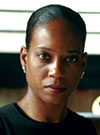 Tanya Wideman-Davis M.F.A. ’13, who was principal dancer with Dance Theatre of Harlem, is co-founder and co-artistic director of Wideman/Davis Dance, and is an assistant professor at the University of South Carolina, where she teaches courses in ballet, contemporary dance, pointe, improvisation, choreography, dance performance, and dance appreciation.
Tanya Wideman-Davis M.F.A. ’13, who was principal dancer with Dance Theatre of Harlem, is co-founder and co-artistic director of Wideman/Davis Dance, and is an assistant professor at the University of South Carolina, where she teaches courses in ballet, contemporary dance, pointe, improvisation, choreography, dance performance, and dance appreciation.
[hr]
Why did you decide at this point in your respective careers to complete a graduate degree in dance?
GK: The primary reason was to allow time and space to reconnect with myself as an artist. I was at a crossroads in my career and I needed more information to move forward.
SK: Dance is a creative, evolving, multifaceted, unpredictable, ever-changing art form, and there is always something to learn.
HP: I craved new information and wanted to dig into unknown territory to broaden my perspective of life—as an artist, yes, but first as a human being.
What attracted you specifically to the M.F.A. program at Hollins over similar programs at other colleges and universities?
TW-D: My husband got his M.F.A. in dance at Hollins, and while he was in school everything he was telling me about the program sounded so intriguing and I was a bit jealous. All of the books he was given for school I read and quickly realized that this is something I needed to do. I knew that was what I had been looking for to creatively take me to the next level.
HP: The reputation for excellence in teaching, and the structure of and subject matter offered in the program, absolutely drew me.
SK: I had spoken with a few graduates of the program and heard great things about it. The depth, diversity, and maturity that I was looking for in a program seemed to be very much a part of the Hollins experience.
IH: First, the convenience of the low-residency track. I was able to focus intensively on my education and still be an artist. Second, I was excited to be in class with practicing artists. My colleagues were university professors, performers, choreographers, and artistic directors—the learning environment promised to be rich and informed from multiple perspectives. Many M.F.A. programs do not have such a diverse student body. Third, I was able to view work by national and international artists and had access to them through our graduate seminar class.
How do the faculty members make the program effective?
HP: The professors had such high expectations and guided us to raise the “barre” to reach them. They offered space to discover, and their focused energy fueled our determination. A pervasive sense of generosity filled this program, and the mentoring and one-on-one work were unparalleled.
TW-D: I loved that we studied dance through the lenses of race, gender, class, and sexuality. We delved into many discussions around dance that had been completely ignored in the circles that I had danced in.
GK: They provide a rich environment where students are encouraged to engage in their individual research at the deepest level possible. I was deeply inspired by the program’s highly theoretical course work, which offered access to new information about dance and enabled me to learn to view and think about dance through multiple lenses.
IH: The faculty are made up of notable, practicing professionals in the field. Their research is current, progressive, inclusive, and cutting edge. They also have a gift for communicating highly theoretical information to artists in a way that can be understood and assimilated. I also appreciate how hands-on the faculty were in their mentorship of students. They take the time to support your particular learning needs and appreciate your professional obligations.
SK: They bring such a high level of knowledge and expertise to the program and I have learned so much from them.
How did the program transform you professionally and personally?
IH: It created a shift in my core values. I had a very privileged/elite undergraduate experience and was operating under several assumptions about the dance profession and dance education based on the exclusiveness of that training. Hollins made me question many of those assumptions and search deeply to discover what I believed was true in a more personal and meaningful way. I also believe that the program exposed me to other professional/career possibilities.
SK: It has shown me the many possibilities that dance can be. I think I have lost some of the fear that I had about being an artist and realize it is a continual journey and that I have to embrace the process—this was huge for me—to not let fear rule my artistic journey.
GK: My experience changed my life. It was one of the most intense and challenging periods of my artistic career up to this point. My experiences in this program initiated a personal revolution and helped me to develop my mature artistic voice.
TW-D: The Hollins program gave me the power to know that I don’t have to accept anything I don’t want for myself.
HP: I learned that dance is not a universal language. We must write many artists back into our dance history and continue to document the current artists. We must forge our paths so future artists can have the example that a career in dance, whatever the goal, is not only possible, but also attainable.
What about the M.F.A. experience has proven to be particularly valuable in your career?
TW-D: I feel I have a support system now that I did not have before. I can always email or call my Hollins professors and ask them questions about where to find resources and help with navigating academia.
SK: I have so much more to offer my students since completing the program. And this new awareness and knowledge translates immediately into a more enriching experience for my students. I now feel so much more equipped to teach my students all that they are so passionate to learn and take them to a more rewarding and fulfilling place in their growth as artists and dancers.
HP: I use my Hollins education greatly in conjunction with teaching. In terms of choreography, my research includes readings on theory and history, which shapes much of my new work. I see more options in life, in general. I am far more aware of what needs to be changed in ballet and I want to be a part of those changes.
IH: Being in class with several individuals who direct their own companies inspired me to explore the possibility of founding my own. The mentorships I developed with my professors still provide support for the work I do and hope to do with my company. The critical thinking skills I developed in our theory classes also helped me to think about dance-making differently and find the essence of what my goals/intentions/perspective are and develop the skills to express those through my work.
What would you say to encourage someone to consider the program?
GK: It is a great match for working artists at various stages in their careers; the multiple tracks offer different ways to participate in the program. It is excellent for an artist who is highly motivated, open minded, and self-directed.
IH: The program values the art of dance. [The directors] allow you to find your own interests and support your goals. They also respect performance and choreographic experience in a way that made me feel safe and supported.
HP: Who would thrive at Hollins? As far as I am concerned, anyone who applies. If their energy drew them to Hollins, they are ready. Of course, the curious soul, ready for challenge and change, will thrive. Someone ready to question what they know. This M.F.A. program is exceptional. The artists who choose to participate will grow immeasurably.
TW-D: It’s funny you would ask that question because I cannot stop raving about the Hollins program. My usual dialogue is, “It is a life-changing experience. Go to the program so you can self-actualize. You deserve it.”
[hr]
Coming summer 2014: New affiliation with institutions in Frankfurt, Germany
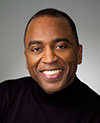
Jeffery Bullock
Big changes are afoot in the M.F.A. program. This was the final summer for the residency program at the American Dance Festival in Durham, North Carolina. Starting next summer, M.F.A. students will have the opportunity to spend three weeks with two institutions in Frankfurt, Germany: the Forsythe Company and the University of Music and Performing Arts in Frankfurt. “This new Hollins/Frankfurt collaboration continues the history of programming that is innovative and forward thinking,” says associate professor and department chair Jeffery Bullock.
Christopher Roman, former member of Ballet Frankfurt and the Forsythe Company, and the newly appointed head of education for the Forsythe Company, will be curating the three-week dance and study experience. Also on board is Ingo Diehl, professor and director of the contemporary dance program at the University of Music and Performing Arts in Frankfurt.
Jeff Hodges is director of public relations at Hollins.
